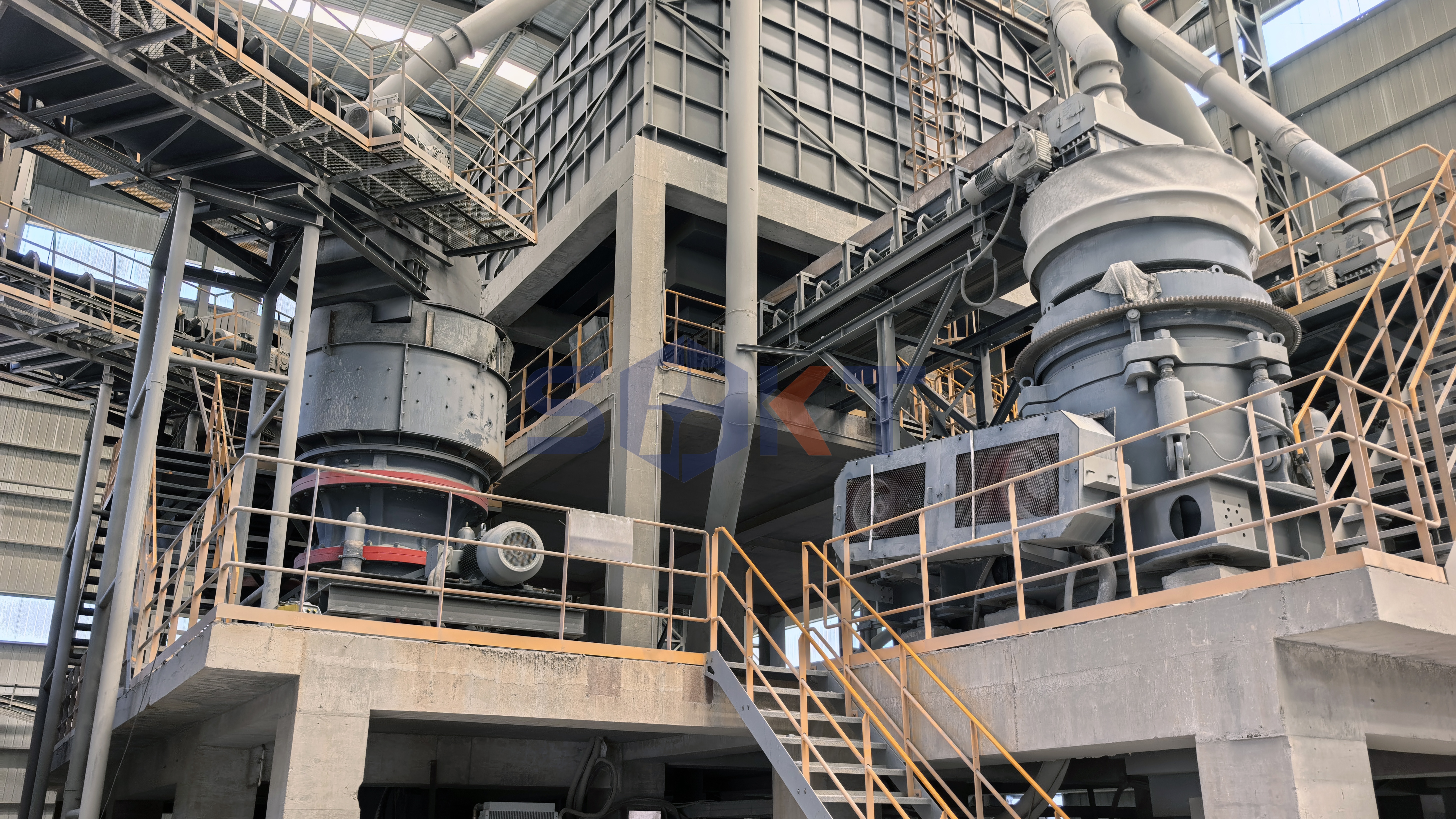
During the crushing process, raw material characteristics are one of the key factors influencing product particle size. Their physical and chemical properties directly affect the crushing difficulty, crushing method, and particle distribution. This article will analyze the impact of raw material characteristics on product particle size from six key perspectives and provide strategies for addressing this impact.
IV. Feed Particle Size Composition
Influencing Mechanism
Excessive proportion of coarse particles in the feed (e.g., 300mm particles >30%)
Frequent overloading of the jaw crusher causes the discharge opening to expand momentarily, resulting in fluctuations in the coarse crushed product particle size (e.g., from ≤200mm to ≤250mm).
Uneven feeding of the secondary crushing equipment (e.g., cone crusher) impairs the lamination crushing effect, and the proportion of 50mm particles in the product increases by 15%.
Overly uniform feed particle size (e.g., 80% 100-150mm)
This can easily lead to “single-particle crushing” during crushing, resulting in a low fine particle content (10mm particles <20%) and low energy efficiency.
Countermeasures
1. Pre-screening to control feed gradation
Install a fixed grating (300mm aperture) before coarse crushing to remove oversized particles (>500mm) and prevent clogging. Before secondary crushing, use a vibrating screen (e.g., with an 80mm mesh) to separate the material into two grades: <80mm and 80-300mm. These grades are fed into different crushing paths to balance the equipment load.
2. Properly Set the Crushing Ratio
When the feed contains a high proportion of coarse particles, increase the primary crushing ratio from 5 to 6 and reduce the secondary crushing ratio from 4 to 3.5 to avoid overloading a single stage.
V. Mineral Density and Shape
Influencing Mechanism
High-density ores (e.g., fluorite containing barite, with a density >3.0 t/m³)
Under the same crushing force, the particles have greater inertia, making crushing more difficult and resulting in a coarser product size (e.g., under the same conditions, the proportion of 5mm particles is 10%-15% lower than that of low-density ores).
Impact crushing is prone to “skipping” and overcrushing, resulting in an increased overcrushing rate (e.g., 15% of 0.1mm fines mixed with 0.5mm particles). Flaky or plate-like particles (such as shale-type fluorite)
During crushing, they tend to break along their minor axis, resulting in a high proportion of flaky particles in the product (up to 40%), impacting subsequent processes (such as reduced reagent adsorption efficiency during flotation).
Strategies
1. Adjust the direction of the crushing force
For high-density ores: Use a cone crusher (vertical extrusion crushing) instead of an impact crusher to increase the crushing force duration (from 0.1s to 0.3s) and improve crushing efficiency.
For flaky ores: Use a roller crusher (shearing + extrusion) or a vertical shaft impact crusher (high-speed impact + autogenous grinding) to shape the ores and reduce the presence of flaky particles (to ≤ 20%).
2. Combined grading and sorting
After crushing, use a shaped screen (such as an elliptical mesh screen with a major axis/minor axis ratio of 2:1) to separate the flaky particles and return them to the crusher for re-crushing.
VI. Raw Material Moisture and Temperature
Special Impacts (e.g., low temperatures in winter or high-temperature ore)
Low-temperature Environments (<0°C)
Ore with a moisture content >5% is prone to freezing and forming “ice inclusions” during crushing. This results in a finer measured particle size after crushing (particles disperse after the ice melts), but the actual effective mineral particle size is coarser.
High-temperature Ores (e.g., smelting slag waste heat ore, temperatures >200°C)
Crushing equipment bearings are prone to overheating (temperatures >80°C), forcing a speed reduction (e.g., cone crusher speed reduction from 300 rpm to 200 rpm), resulting in a coarser product particle size (increasing the proportion of 10mm particles by 25%).
Countermeasures
Temperature Pretreatment
Low-temperature Ores: Thaw in a preheating bin (15-20°C) for 2 hours before crushing to reduce the moisture content to below 3%. Hot ore: Air-cool the ore to <50°C beforehand to avoid overheating and prevent thermal embrittlement, which can lead to over-crushing (for example, at temperatures >300°C, the -0.1mm fines increase by 30%).
Raw material properties affect the crushing energy requirements, particle stress distribution, and equipment operating conditions, ultimately impacting the product particle size, uniformity, and shape. In actual production, a “raw material properties database” should be established to monitor ore hardness, moisture content, and other indicators in real time. Crushing parameters (such as discharge opening, rotational speed, and crushing ratio) should be dynamically adjusted. Pre-treatment (washing, drying, and grading) should be performed to eliminate adverse effects and achieve precise particle size control.
If you’re interested in setting up a stone crushing production line, please contact Shengbang Machinery via WhatsApp at +8613949025317 for more information!
Fill in the information and we will contact you as soon as possible